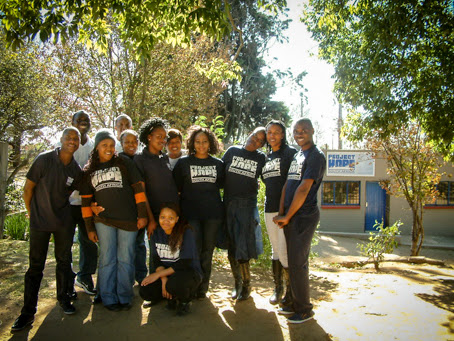Drew Wallace, a volunteer from Virginia, USA is here in South Africa for the first time helping Project HOPE South Africa set up its nutrition program as part of the HOPE Centre project. Here is a blog about his first impressions....

So I guess it would be appropriate to start off with a bit
about me. This August, I’m going to be a sophomore at The College of William
and Mary (Go Tribe!), majoring in International Relations, with a minor in
premed focused kinesiology. I have
always been interested in global health and wellness around the world, but in
all my 19 years of life, I have never been outside of the continental United
States. Sooner or later, this would need to change if I wanted to pursue my
dream of helping people around the world lead healthy lives, so I jumped at the
opportunity to volunteer with Project HOPE South Africa.
When people think of health problems in Africa, they
generally think of infectious diseases, HIV, Malaria, etc. but in actuality,
Africa, most specifically South Africa, has the world’s fastest growing
diabetic population, and diabetes, as well as the heart conditions associated
with diabetes and an unhealthy lifestyle, is the leading cause of death in
South Africa. What Project HOPE South Africa is trying to do is establish
comprehensive, across the board care for diabetic and hypertensive patients in
Johannesburg’s poorest neighborhoods. My role more specifically, is to help
develop a nutrition and exercise program, trying to get more people to grow their
own vegetables to supplement their diet, and replace fried meats and starches,
as well as get out and exercise in the very limited space they have.
Getting off the plane after a 15 hour flight, your mind
really doesn’t register that you are now in South Africa, the airport could be
in any metropolitan area in the United States, there are no giraffes, no
zebras, no lions, just a typical airport terminal. Large parts of Johannesburg
would fit in most anywhere in the first world, if not for the ever-present
security fences and armed response signs, a constant reminder to this isn’t the
suburban Virginia I’m so used to. The contrast becomes even more apparent when
you get into the townships, informal settlements like the one the Project HOPE
office is located in. South Africa, especially Johannesburg is a country with
intense dichotomy, on one side of the road you could have a first world
shopping center or a beautiful golf course, on the other side, a village of
corrugated metal shacks crammed together along narrow unpaved allies.
The challenge now is to show families how they can grow
healthy food in the limited space they have, in order to manage their diabetes.
To do this we will be building a variety of demo gardens, and putting together
instructions on how to build them, so that diabetic patients can better manage
their condition with proper exercise and nutrition. I’m really excited for this
opportunity to help out, and hope the new clinic can make a great positive
impact on the community!


















